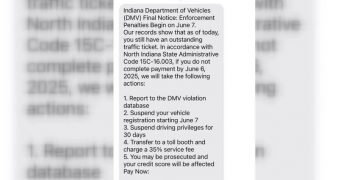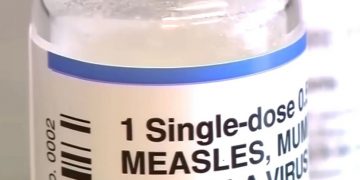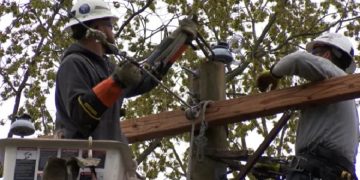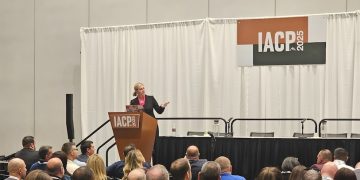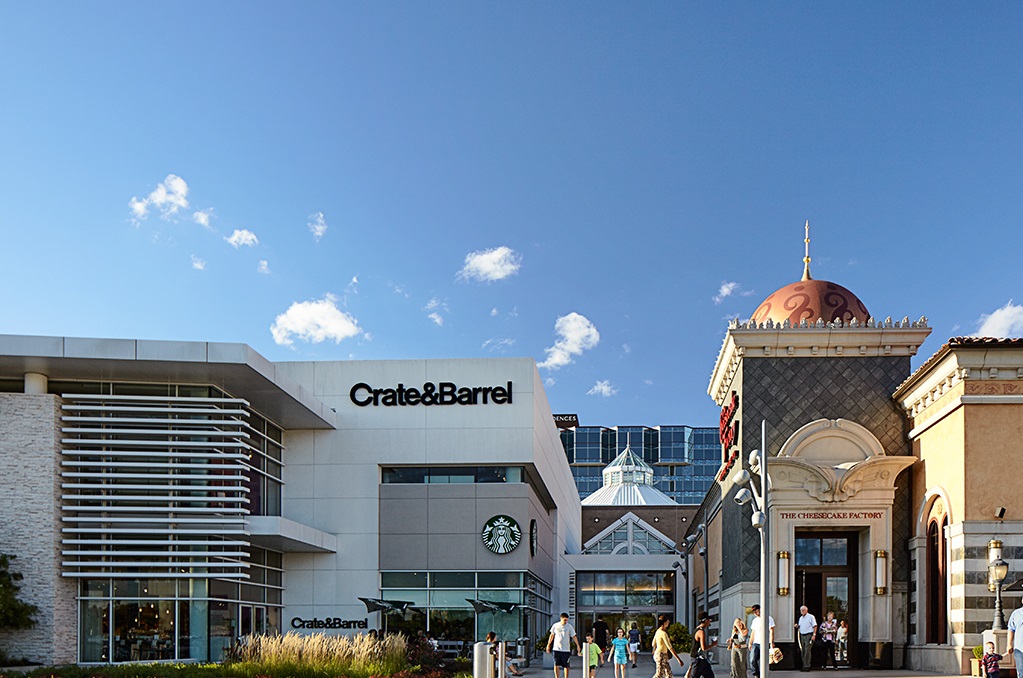The United States surpassed 20 million total recorded COVID-19 cases on Friday, hours after the country ushered in 2021 and left behind its deadliest month of the pandemic.
The nation also has set a COVID-19 hospitalization record for four straight days. The high counts are a grim reminder that even with 2020 behind us, the pandemic continues to ravage parts of the country. And some leaders warn the worst is still ahead.
“We are still going to have our toughest and darkest days,” Los Angeles Mayor Eric Garcetti told CNN on Thursday.
More than 125,000 coronavirus patients were in U.S. hospitals Friday, COVID Tracking Project data shows.
Los Angeles County, as well as the state of California, have battled brutal surges of infections, hospitalizations and deaths in the past weeks, drivenin part by Thanksgiving gatherings, health officials said. Surging hospitalizations in the county are pushing hospitals to the “brink of catastrophe,” said Dr. Christina Ghaly, its health services director.
Design and construction experts from the Army Corps of Engineers are being deployed to fix oxygen delivery systems at several older hospitals in the Los Angeles area, according to California’s Office of Emergency Management.
Teams will begin work as soon as Saturday at six overtaxed hospitals identified as having infrastructure problems that are preventing them from providing a high pressure supply of oxygen to COVID-19 patients.
“The State of California is continuously working to support our hospitals and protect the lives of Californians impacted by COVID-19. By working to upgrade challenged oxygen delivery systems at these older hospitals, we can improve the ability to deliver life sustaining medical care to those who need it,” said Mark Ghilarducci, director of the Governor’s Office of Emergency Services.
In Atlanta, a convention center will again become an overflow field hospital starting Friday — service it has given twice previously during the pandemic — Georgia Gov. Brian Kemp’s office said.
The number of COVID-19 patients in Georgia hospitals on a given day has more than doubled since mid-November, the tracking project’s data shows. The convention center’s beds will “help ensure that our hospitals continue to have the capacity they need for COVID and non-COVID patients,” Kemp has said.
As of early Friday afternoon, the country had recorded a total of more than 20,080,000 COVID-19 cases, according to Johns Hopkins data. Going by official tallies, it took 292 days for the U.S. to count its first 10 million cases, and just 54 more days to double that figure.
However, the actual pace of infections probably was different. Researchers have long said the number of infections likely is many millions higher, having been undercounted in part because of testing limitations.
December was the deadliest month of the pandemic for the U.S., accounting for more than 77,500 of the country’s 346,000 COVID-19 deaths, Johns Hopkins University data shows.
And experts have warned daily numbers could worsen nationwide in the coming weeks, with swells stemming from gatherings and travels over the holidays.
Despite repeated calls from local and state leaders for people to celebrate with only members of their household, millions of Americans opted to spend time away from home.
No evidence UK variant is common in US, genomics company says
Testing so far does not indicate a more easily transmitted variant of the coronavirus is common across the U.S., genomics company Helix told CNN.
Only four out of 31 samples have turned up positive for the pattern of mutations first identified in the United Kingdom, Helix officials said.
The mutation pattern, known as B.1.1.7 or VUI-202012/01, was first seen in England and has been found in at least 30 countries, as well as in samples taken from people in California, Colorado and Florida.
“We cannot say with confidence when the B.1.1.7 strain emerged in the U.S.,” Dr. James Lu, co-founder and president of Helix, said. “But it’s not common, which indicates it has not been circulating long.”
That said, the U.S. is not really looking hard, Lu added. “Currently, the U.S. is doing less sequencing than many other countries — a recent report from (genomics database) GISAID estimated that the U.S. is sequencing 0.3% of positive cases versus the UK that’s at about 7%,” Lu added.
Fauci: US won’t follow UK’s decision to delay 2nd vaccine doses
As the U.S. wraps up its third week of vaccinations, Dr. Anthony Fauci made a major statement Friday about how they will proceed.
The U.S. will continue giving two doses of the current coronavirus vaccines weeks apart, and will not follow the UK’s decision to potentially delay second doses, Fauci told CNN senior medical correspondent Elizabeth Cohen.
“I would not be in favor of that,” Fauci said when asked about the UK’s new dosing plan. “We’re going to keep doing what we’re doing.”
So far, the coronavirus vaccines approved in the U.S. require two doses, taken three to four weeks apart.
On Wednesday, the British government announced that the UK would prioritize giving the first dose of the Pfizer/BioNTech vaccine “to those in the most high-risk group” and allow the second dose to be given up to 12 weeks later.
The UK adopted that strategy to give as many people as possible the first dose as quickly as possible. Even the first shot, UK medical officers have argued, would afford some amount of protection.
Asked on Thursday by NBC’s “Today” show if the U.S. should adopt the UK’s plan, Fauci had answered, “That’s under consideration.”
But he told CNN Friday that this comment had been misinterpreted.
Pfizer and Moderna, the makers of the two vaccines given emergency use authorization in the U.S., studied the effectiveness of two doses a few weeks apart, not a few months apart, noted Fauci, director of the National Institute of Allergy and Infectious Diseases.
“The fact is we want to stick with what the science tells us, and the data that we have for both (vaccines) indicate you give a prime, followed by a boost in 21 days with Pfizer and 28 days with Moderna. And right now, that’s the way we’re going with it, and that’s the decision that is made,” he said Friday.
“We make decisions based on data. We don’t have any data of giving a single dose and waiting for more than the normal period of time” to give the second dose, he added.
When Fauci told NBC that following the UK’s example was “under consideration,” he meant that some people — not U.S. health authorities — were talking about it, he told CNN Friday.
“It was somewhat of a misinterpretation. I think some — not everybody — but people misinterpreted when I said it’s under consideration (as) like we’re going to change. We’re not,” he said.
People who were vaccinated with the Pfizer vaccine on December 14 are due soon to take their second shots.
Vaccines will take months to make a big difference, experts say
Experts say it will be months before vaccines are widespread enough to turn the course of the pandemic.
So far, more than 12.4 million vaccine doses had been distributed nationwide and more than 2.7 million had been administered, according to the CDC data from Wednesday. The rollout has been slower than many officials expected, but if the U.S. is able to catch up in 2021, widespread vaccination could be possible starting in early spring,Fauci has said.
“Let’s say in April, it will be what I call ‘open season,’ namely, anybody who wants to get vaccinated can get vaccinated,” Fauci said Wednesday in an online conversation with California Gov. Gavin Newsom.
“If we then diligently vaccinate people in April, May, June, July, then we will gradually and noticeably get a degree of protection approaching herd immunity.”
If vaccinations pick up, by the time early fall rolls around, Fauci said, “we will have enough good herd immunity to be able to really get back to some strong semblance of normality.”
























